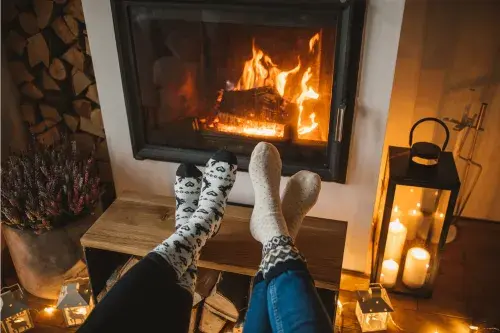Summer is coming to an end, the days are getting cooler and the first wood-burning stoves are being lit. But what about fire protection for wood-burning stoves? What distances must be observed, what fire protection materials should be used and what fire protection aids should not be missing? We give you tips on fire protection for wood-burning stoves.
Fire protection distance for stoves
A minimum distance from combustible materials must be maintained to ensure fire protection for the stove. The distance depends on the materials used in the vicinity of the stove as well as on the stove itself. Combustible materials include, for example, wooden walls and ceilings, furniture, curtains and carpets. The parts installed on the fireplace also have an influence on the minimum distances. Side plates reduce the minimum distance to combustible materials.
To minimise the risk of fire, fireproof materials such as stone, marble, tiles or special fireplace surrounds are useful. In the respective operating instructions of the fireplace manufacturers, tables can be found that specify the distances to all sides depending on the materials used.
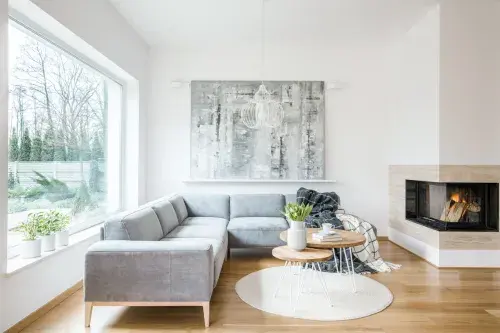
Fire protection panels for fireplace
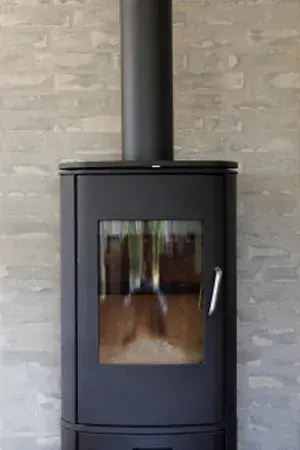
Fire protection for stoves can be significantly influenced by fire protection panels. Fire protection panels consist of a special building material that prevents or slows down the spread of fire. Fire protection panels for fireplaces are made of fire-resistant materials such as plasterboard or gypsum fibreboard and protect the wall and top surfaces around the fireplace. Fire protection panels for the fireplace are available in various thicknesses, depending on the requirements of the fireplace manufacturer and local building regulations.
We will be happy to assist with the wall-pipe feed-through and installation of the fire protection panels. Get in touch with us!
Heat protection panels for fireplace
Heat protection plates protect adjacent materials from excessive heat and reduce the development of a fire. Heat protection panels are made of e.g. vermiculite, fireclay or other heat-resistant substances. Heat protection panels are often installed behind or under the fireplace to protect the wall or floor from the high heat of the fireplace.
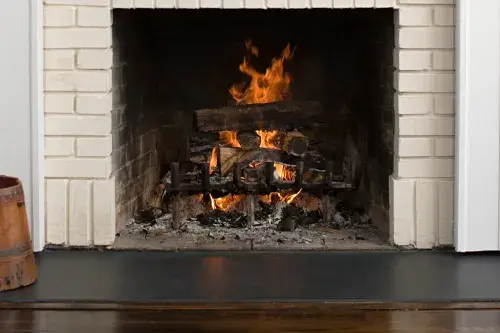
Regular inspection of the chimney

Fire protection for stoves should be checked annually by a chimney sweep. This includes
- cleaning the flues,
- checking the seals and
- removing deposits in the stove.
This inspection increases the fire protection for the stove.
Fire extinguisher for fireplace
A useful addition to fire protection for stoves is a fire extinguisher. Both ABC powder extinguishers and foam extinguishers come into question. Fire extinguishers with powder are very efficient, but the fine powder spreads into every small crack, even into surrounding electrical appliances, which can lead to further damage. That is why we recommend a foam extinguisher for fire protection of fireplaces. Environmentally friendly foam extinguishers are filled with fluorine-free extinguishing foam.
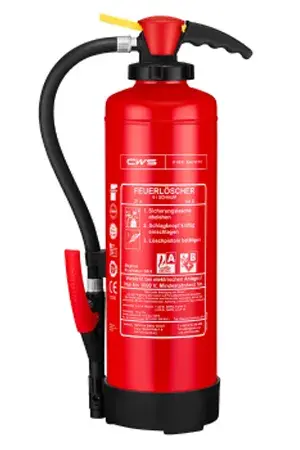
If you are new to the use of fire extinguishers, you can practise in advance in fire safety training courses. Take a look at our dates for training fire safety assistants. Fire safety assistants are mandatory for most companies, so you can use the knowledge twice. Ask your employer if they would cover the costs of the training.
Smoke detector and CO detector
Smoke detectors must be installed in living rooms, bedrooms and on escape and rescue routes. Should a fire break out, an early warning of toxic smoke gases is given.
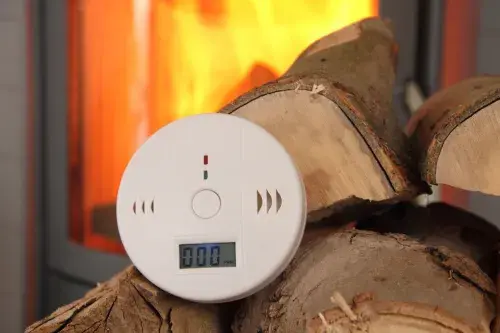
In addition, where a stove is in use, a CO detector (carbon monoxide detector) should be installed. Carbon monoxide is an odourless and colourless gas. Carbon monoxide can be produced by incomplete combustion in the fireplace. When carbon monoxide is inhaled, it prevents the absorption of oxygen. This can cause dizziness and drowsiness as well as, in the worst case, death by suffocation. A CO detector gives an early warning so that the rooms in question can be ventilated in good time.
Well prepared for the winter season
With our tips on fire protection for stoves, you are now well prepared for the existing winter season and can safely enjoy the crackling of the fireplace.
